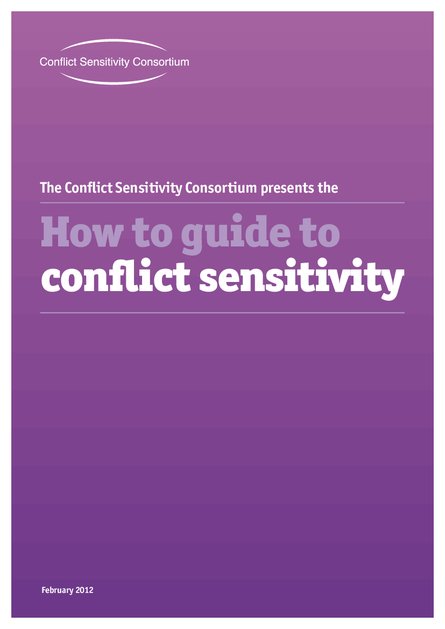
‘Any project set in a conflict-prone region will inevitably have an impact on the peace and conflict environment—positive or negative, direct or indirect, intentional or unintentional.’2 Many organisations are active in conflict-affected areas, bringing with them a diverse range of mandates and methods. Prominent amongst these actors are governments(including donors), civil society (including local and international NGOs) and multi-lateral organisations. Each actor has specific priorities and objectives that relate to their mandate, such as a primary focus on poverty reduction, saving lives, protecting human rights, improving education etc. Actors in conflict-affected areas are increasingly realising that their interventions will have unintended impacts on the context within which they are working and hence have grown aware of the need for conflict sensitivity.
This Guide draws upon Consortium experience to illustrate real examples of applying conflict sensitivity.It aims to provide practical advice suitable for anyone aiming to improve conflict sensitivity, whether in the field of development, humanitarian aid or peacebuilding work.It aims to provide user-friendly information for people who are focusing at project or at organisation-wide level, whether aiming for best practice or just starting out on the journey towards conflict sensitivity. The Guide has been organised into six core chapters. Each of these chapters contains a number of sub-themes exploring ‘the what’, ‘the why’ and particularly ‘the how’ of conflict sensitivity.
